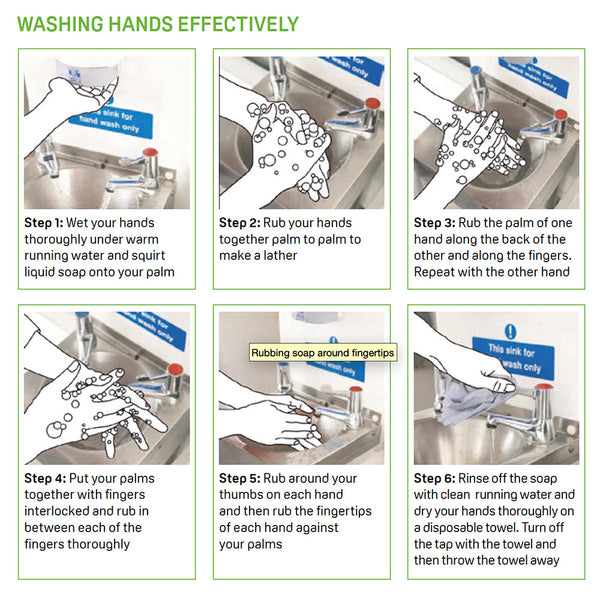Food Safety and Hygiene
Here at Rhyl Kitchen Classroom, we have a 5 star Food Hygiene Rating and hire the building to wide range of individuals and organisations - from parents to professional chefs.
We expect everyone to follow the basic guidelines around hygiene and food safety in the kitchen. If you want to learn more about food safety, you can find out lots of useful information on the Safer Food, Better Business website and in this guide to catering at community events and the 4Cs of Food Safety.
Here are some key points:
- We are a nut free school. You are able to use nuts when hiring Rhyl Kitchen Classroom But you must remove every trace when you are cleaning at the end of the day and be sure to not leave any products containing nuts in the fridges or cupboards.
- Areas used for food preparation must be cleaned before and after use. The surface sanitiser we supply has a 60 second wait time - this means you must wait 60 seconds before you rub off using blue paper cloth.
- We supply different coloured chopping boards - see picture below - to prevent cross contamination.( Red = meat; blue = raw fish; yellow = cooked meats; green = salads and fruits; brown = vegetables; white = dairy). It is important to use different chopping boards / work surfaces / utensils / plates for raw food and cooked or ready-to eat foods, meats, salads and vegetables and to wash them between use. This is particularly important if you are cooking with raw meat, poultry, seafood and eggs. Do not wash raw meat in the sinks. Wash your hands after touching raw food and before you handle ready-to-eat food.
- Ensure those preparing food follow and maintain good personal hygiene such as: tying long hair back; covering all cuts and grazes with blue plasters (so it can be seen if it drops into food) and remove any rings or other hand jewellery.
- Always wash hands thoroughly with soap and hot water and dry hands with a clean hand towel (not a tea towel or apron).
- Always ensure hands are washed after visiting the toilet, handling raw food such as eggs, blowing your nose or touching animals, smoking or eating etc.
- Store raw foods separately from ready-to-eat foods and place them covered on the bottom shelf of your fridge. Label any foods you you store overnight in the fridge - we supply stickers for this.
- If anyone in your group has symptoms of diarrhoea or vomiting they must not use the kitchen until they are 48 hours symptom free.
- Thoroughly wash salad and vegetables to remove soil and e-coli contamination risk.
- Keep foods at the right temperature (below 8°C for chilled, above 63°C for cooking). Aim for an internal temperature of 75°C or hotter when you cook food. Heating foods to this temperature kills most food poisoning bacteria.
- Keep products containing cream or butter icing in the fridge (below 8°C) until needed, and make sure they are kept chilled before being served.
- Food/liquid spillages to be cleaned up immediately.
- Food Allergens: cook and prepare separately any food known to cause allergies. I.e. wash down surfaces and utensils that have been used prior to making other dishes or cakes. You can find out more about food allergens here.


